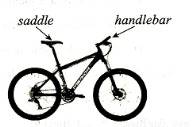题目内容
A
An idea that started in Seattle's public library has spread throughout America and beyond. The concept is simple: help to build a sense of community in a city by getting everyone to read the same book at the same time.
In addition to encouraging reading as a pursuit (追求) to be enjoyed by all, the program allows strangers to communicate by discussing the book on the bus, as well as promoting reading as an experience to be shared in families and schools. The idea came from Seattle librarian Nancy Pearl who launched (发起)the "If All of Seattle Read the Same Book " project in 1998. Her original program used author visits, study guides and book discussion groups to bring people together with a book, but the idea has since expanded to many other American cities, and even to Hong Kong.
In Chicago, the mayor appeared on television to announce the choice of To Kill a Mockingbird as the first book in the "One Book, One Chicago" program. As a result, reading clubs and neighbourhood groups sprang up around the city. Across the US, stories emerged of parents and children reading to each other at night and strangers chatting away on the bus about plot and character.
The only problem arose in New York, where local readers could not decide on one book to represent the huge and diverse population. This may show that the idea works best in medium-sized cities or large towns, where a greater sense of unity can be achieved .Or it may show that New Yorkers rather missed the point, putting all their energy and passion into the choice of the book rather than discussion about a book itself.
Ultimately as Nancy points out, the level of success is not measured by how many people read a book, but by how many people are enriched by the process or have enjoyed speaking to someone with whom they would not otherwise have shared a word.
1.What is the purpose of the project launched by Nancy?
A. To invite authors to guide readers.
B. To encourage people to read and share.
C. To involve people in community service.
D. To promote the friendship between cities.
2.According to the passage, where would the project be more easily carried out?
A. In large communities with little sense of unity
B. In large cities where libraries are far from home
C. In medium-sized cities with a diverse population
D. In large towns where agreement can be quickly reached
3.The underlined words “shared a word” in Paragraph 5 probably mean_____.
A. exchanged ideas with each other
B. discussed the meaning of a word
C. gave life experience
D. used the same language
4.According to Nancy, the degree of students of the project is judged by ______.
A. the careful selection of a proper book
B. the growing popularity of the writers
C. the number of people who benefit from reading.
D. the number of books that each person reads.
 开心蛙口算题卡系列答案
开心蛙口算题卡系列答案

